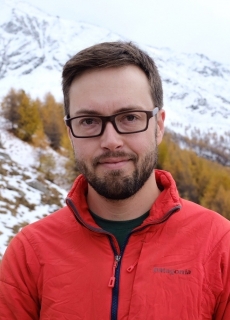How will climate change affect hailstorms?
Expected effects of climate change on hailstorms vary markedly by region, says a new international review involving UNSW.
Expected effects of climate change on hailstorms vary markedly by region, says a new international review involving UNSW.

Diane Nazaroff
UNSW Science
0424 479 199
Hail severity may increase in most regions of the world while Australia and Europe are expected to experience more hailstorms as a result of climate change, an international review led by a UNSW Sydney researcher has found.
The review study, published in Nature Reviews Earth & Environment, examined the effects climate change will have on hail in the future.
It shows a global summary of hail trends from past observations and projected future trends from simulations and models.
The review led to the general expectation that hailstorm frequency will decrease in East Asia and North America, while increasing in Australia and Europe, and that hailstorm severity will increase in most regions.
Researchers from University of Bern, Central Michigan University, Karlsruhe Institute of Technology, University of Illinois, Colorado State University and Peking University took part in the study.
“We came to the conclusion that on balance, the hail threat is likely to increase in Australia, especially in Australia’s south-east including the Sydney area,” lead author and postdoctoral researcher at UNSW Sydney’s Climate Change Research Centre, Tim Raupach said.
But the researchers say current and future climate change effects on hailstorms remain highly uncertain, in part due to a lack of long-term observations and limited modelling studies.
“There’s very high uncertainty when it comes to these predictions and Australia is particularly of high uncertainty because there are very few studies that have actually looked at Australia.
“We need to do further study to find out exactly what we expect to happen, not only in Australia but across the world.”
The study examined the general expectation that atmospheric ingredients that affect hail – an unstable atmosphere, the amount of melting of falling hailstones, and wind shear or differences in wind by height – would change with a warming climate and lead to less frequent but more intense hailstorms.
“We know with climate change that we are going to have more moisture in the atmosphere and that leads to more instability in the atmosphere, so we expect there will be more tendency for thunderstorms to occur because of this unstable atmosphere,” Dr Raupach said.

Dr Tim Raupach. Image: Supplied.
Because the atmosphere will be warmer, the melting level – which is the height in the atmosphere below which ice begins to melt – will get higher, he said.
“So as a melting level gets higher, hail that forms high in the atmosphere and falls towards the ground has more time to melt and may indeed melt entirely before it gets to the ground, and you end up with no hail at the surface.”
Overall wind shear – a process that “organises” storms and makes them more severe – is expected to decrease, he said, but hail storms will be more affected by the other two factors.
“The changes you can expect of these three properties of the atmosphere lead us to expect that hail will be less frequent, because there’s more melting essentially in the future,” Dr Raupach said.
“But the hail will be more severe when it does occur, because there will be more instability in the atmosphere which can lead to the formation of much larger hailstones.
“So when the hail does survive this extra melting, it will be larger and more severe when it does actually hit the surface.”
The review showed, however, that this general expectation was not applicable everywhere, with reported hail changes differing in different parts of the world.
“Regional variability in the atmospheric changes leads to varying hail responses, which is why studies show increasing hail frequency in Europe but decreasing hail frequency in East Asia, for example”, said Dr Raupach.
The study looked at trends in hailstorms from past observations, such as from meteorological stations, hail pads (sheets that record hail impacts), and crowdsourced or media reports.
Dr Raupach said there was high uncertainty in these trends because hailstorms are very difficult to measure due to their small scale and rarity.
“If you put out an instrument to capture [or] measure hail, even in a place where you might expect a lot of hail, you might only get one or two hits on that instrument in a year,” he said.
“If you are trying to look at climate change and long-term trends where you want decades of information, it’s very difficult to collect that kind of information about hail.”
The review also summarised results from simulations and model studies that project what the effects of climate change will be on hail in the future.
“You can see whether the model actually produces more hailstorms or less hailstorms in the future when you change the properties of the model, such as making the temperature higher or increasing the melting level height,” Dr Raupach said.
Because hailstorms are a small-scale phenomenon, they are difficult to model with regular weather models.
“You need to have a very high-resolution model to actually be able to resolve the size of the hailstorm,” Dr Raupach said. “There have been a few of these studies but they are relatively rare and we need more of them to be able to understand how hail will change in the future with climate change.”
To reduce the uncertainty about hailstorms and climate change, the researchers recommended recording long term observations with instruments such as hail pads in uncovered hail hotspots.
They also recommended improving so-called proxy relationships, which scientists use to try to statistically relate large-scale hailstorm “ingredients” in the atmosphere to the formation of hail that hits the surface.
“The problem we have with [these] proxy relationship[s] is that even when the atmosphere is thought to be prone to hail forming, it’s still relatively rare that hail actually forms,” Dr Raupach said.
Process-oriented studies which look at the details of how hail forms in clouds and then grows into large hail were also recommended to close current knowledge gaps.
“For example, a topic of current research is whether an increase of aerosols leads to an increase in hail formation or a decrease in hail formation,” Dr Raupach said.
The changing economic impacts of hail should also be studied, since changes to building materials, population growth, and crop cycles also change hail exposure.
“We expect the damages that can be caused by hail to also change in the future,” Dr Raupach said.
More high-resolution computer models, run at high-performance facilities such as the National Computational Infrastructure in Canberra, should be used in further research.
“As these systems come online, we are able to do high resolution studies that were previously too computationally expensive to actually run,” he said. “These models are going to be extremely useful for understanding how hail will change in a warming climate.”
The next steps in Dr Raupach’s research focus on using such high-resolution weather models to examine the effects of climate change on convective storms and to better understand hailstorm proxy relationships.
Read the study in Nature Reviews Earth & Environment.